They flew from Europe to Brazil, played five rounds in Sao Paulo, crossed the equator again on the way to Bilbao, Spain, where they played another five rounds. After the world's best chess grandmasters have done all this traveling and playing, the outcome of the Chess Masters Final was still up in the air. It came down to a tiebreaking blitz game in which Norway's Magnus Carlsen, the world's top-rated player, defeated Ukraine's Vassily Ivanchuk, at 42, the oldest participant.

Ivanchuk had a blistering start with one draw and three wins in the first four games, but things changed in a hurry. He lost to Carlsen in the next round and suddenly the Norwegian GM had a chance to catch up. The first part of the double-round event was over and the players had to fly to Spain.
On the way to the airport, still on the hotel premises, Ivanchuk and his wife were robbed. But the thugs didn't get Ivanchuk's laptop, a necessary tool of today's chess players, and the Ukrainian resumed play in Bilbao on time. He beat the American GM Hikaru Nakamura, but managed only two draws and two losses till the end. The loss to Carlsen catapulted the Norwegian into first place. Had the organizers used the traditional results, the final crosstable would have looked like this:

But to encourage fighting chess, the Chess Masters Final was scored differently. Based on soccer scoring, the Sao Paulo/Bilbao results were kicked up to 3 points for a victory, one point for a draw and zero points for a loss. It enabled Ivanchuk to share first place with Carlsen.

Regardless of the soccer-style scoring, the organizers will be submitting only the traditional crosstable to FIDE for ratings. It is the only way to align it with other tournaments and to be able to make a historical comparison.
Since the classical games did not produce a clear winner, Carlsen and Ivanchuk had to play a blitz game tiebreak. The first game was drawn, but Carlsen won the second game and became the champion. What if Ivanchuk had won the blitz? The tournament results would have become meaningless. Strange, very strange, indeed.
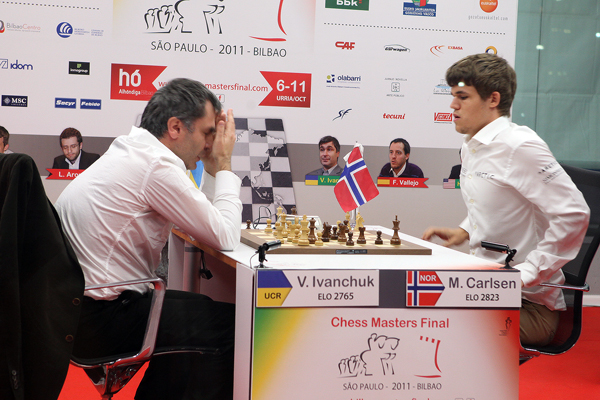
Carlsen just played 39...Qg3+, the final move in the championship game
Here is the game with some notes:
Ivanchuk,Vasily (2765) - Carlsen,Magnus (2823)
Chess Masters Final, Bilbao, 11.10.2011
Chess Masters Final, Bilbao, 11.10.2011
1.e4 e5 2.Nf3 Nc6 3.Bb5 Nf6 4.d3 (Not allowing the dreadful Berlin endgame after 4.0-0 Nxe4 5.d4 Nd6 6.Bxc6 dxc6 7.dxe5 Nf5 8.Qxd8+ Kxd8.) 4...Bc5 5.Be3 Qe7 6.Bxc6 bxc6 7.Bxc5 Qxc5 8.Nc3 (By exchanging both bishops, Ivanchuk attained a simple position in which he can play fast. No fancy moves, just speed seems to be his strategy.) 8...0-0 9.0-0 Rb8 10.Qd2 Qe7 11.b3 c5 (Stopping any central play with the d-pawn. Both sides would like to open the game with the f-pawn, but who comes first?) 12.h3 d6 13.Nh2 Nh5 14.Nd5 Qd8 15.Rae1 (After 15.Qd1 g6 16.Nf3 f5 black comes first on the kingside. And 15.f4? c6 loses a pawn.) 15...Be6 16.Nc3 f5 (Black is first.) 17.exf5 Bxf5
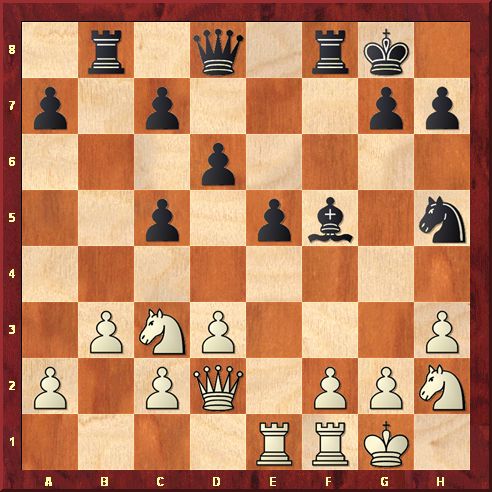
18.f3?! (Threatening to win a piece with g2-g4, but it weakens the dark squares. The immediate 18.g4? loses to 18...Nf4 19.gxf5 Qg5+ 20.Ng4 Nxh3+ winning the queen.) 18...Bg6 19.Rf2 Qh4 (Black controls the dark squares and the open f-file helps him to increase the pressure on white's position.) 20.Nd5 Rf7 21.Qc3 c6 22.Ne3 Nf4 23.Qd2 Rbf8 (Aiming all pieces at the white king. Ivanchuk can only wait and see what Carlsen can come up with.)
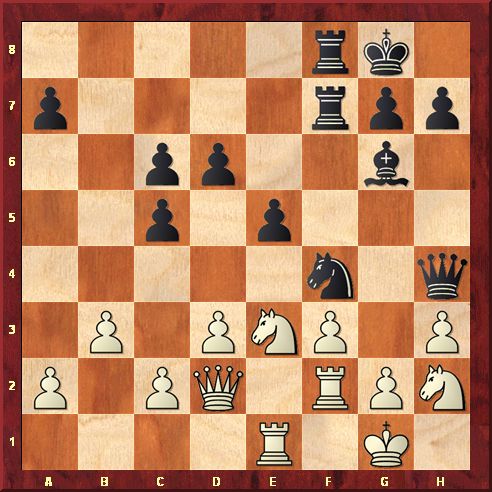
24.Nd1 h5 25.Nc3 Bf5 26.Ne2 Ne6 27.Qe3 Rf6?! (Carlsen would like to switch the rook on the g-file, but the rook move is blocking the escape route for the black queen.) 28.Kh1?! (Ivanchuk is still waiting, but he could have jumped out of the box with 28.f4!? [threatening 29.Nf3 to win the queen] 28...exf4 29.Nxf4; or 28...Nxf4 29.Nxf4 Bc8 30.g3 exf4 31.gxh4 fxe3 32.Rxf6 Rxf6 33.Rxe3 with equal chances.)28...Rg6 (28...Nd4 29.Nxd4 cxd4 30.Qd2 c5 would increase the space advantage, but Carlsen does not want to reduce his forces. He probably thought the knight was important enough to be kept on the board.)29.Rg1 Nc7 30.Rgf1 Nd5 31.Qd2 Rgf6?! (Carlsen gives Ivanchuk another chance to run for freedom and blocks his queen again.)
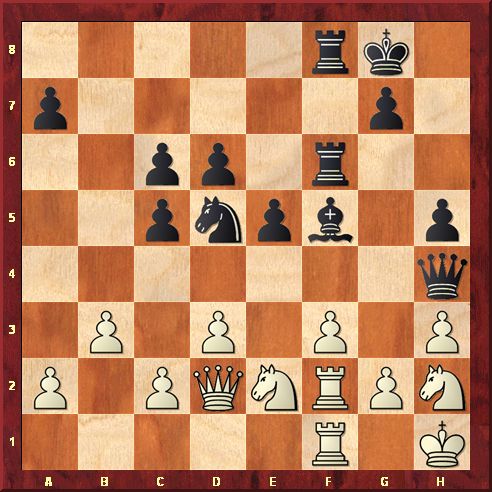
32.Nc3?! (Ivanchuk misses 32.f4! e4 [32...Nxf4? 33.Nf3 wins the queen.] 33.dxe4 Bxe4 34.Nf3 Bxf3 35.Rxf3 with equal chances.) 32...Nf4 33.Ne4 Rg6 34.Rg1 Qd8 35.Nf1 Qe7 (Carlsen prepares to push away the knight on e4. He could have done it right away: 35...d5 36.Nxc5 Qg5 threatening to take on h3. But in a blitz game your plans are often realized slowly.) 36.Nfg3 d5 (Carlsen could have won also with 36...Bxh3 37.gxh3 Nxh3 38.Rgf1 Nxf2+ 39.Qxf2 d5 40.Nxc5 Rf4.) 37.Nxf5 Rxf5 38.Nc3 Qh4!(Threatening to win with either 39...Nxh3 or with 39...Rfg5, Carlsen's attack is breaking through.)
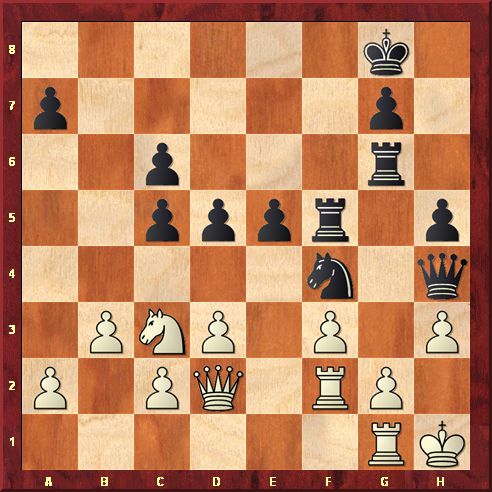
39.Kh2 (Ivanchuk blunders with 93 seconds on his clock, but he had no good defense anyway against 39...Nxh3 40.gxh3 Qxh3+ 41.Rh2 Qxf3+ 42.Rhg2 Qh3+ 43.Rh2 Rxg1+ 44.Kxg1 Rf1 mate. White cannot challenge the black knight: 39.Ne2 Qxf2 wins.) 39...Qg3+ (After 39...Qg3+ 40.Kh1 Nxh3 41.Rff1 Rf4 42.gxh3 Qxh3+ 43.Qh2 Qxh2+ 44.Kxh2 Rh4 mates.) White resigned.
Nakamura threw away his chance to finish first when he got up to get a drink, thinking he has made the time limit, and overstepped the time after 39 moves against the Spanish GM Francisco Vallejo Pons. At the end, the American shared places with the world champion Vishy Anand and Levon Aronian of Armenia.
No comments:
Post a Comment